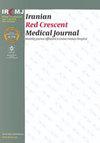牛分枝杆菌疫苗改善艾滋病患者的不完全免疫恢复
IF 0.2
4区 医学
Q3 MEDICINE, GENERAL & INTERNAL
引用次数: 0
摘要
背景:分枝杆菌幼苗富含共抗原,是一种具有双向免疫调节功能的良好免疫调节剂。目的:本研究旨在探讨母牛分枝杆菌疫苗是否能改善获得性免疫缺陷综合征(AIDS)患者的不完全免疫恢复。方法:根据重庆市第九人民医院接受人类免疫缺陷病毒(HIV)长期治疗的患者人数,选择100例接受Haart治疗3年后,HIV-RNA定量低于103 cepies/ml,CD4+T细胞计数低于500/UL,CD4+TT细胞计数超过50/UL的患者。总的来说,他们被随机分配到三组中的一组,一组接受了牛分枝杆菌疫苗的肌肉注射,一组肌肉注射了生长激素,最后一组只接受了安慰剂注射。在基线和12、48和50周后测量初始T细胞、Treg细胞、总CD4+T细胞、辅助性T细胞1(Th1)、辅助性T细胞2(Th2)和白细胞介素7(IL-7)细胞因子的水平和变化。结果:治疗48周后,艾滋病患者的CD4+T细胞、Th1细胞和幼稚T细胞总数增加,而白细胞介素-7细胞因子、Treg细胞和Th2细胞在母牛分枝杆菌疫苗和生长激素组中减少。安慰剂组没有变化,表明牛痘疫苗和生长激素可以改善艾滋病患者的免疫功能。治疗后,在A组(M.vaccae疫苗)中,总CD4+T细胞、Th1细胞和幼稚T细胞增加,Treg细胞、Th2细胞和IL-7细胞因子减少。母牛分枝杆菌疫苗组和生长激素组之间唯一的显著差异是母牛分枝杆菌接种组的Th1细胞减少。经过12周的随访,发现牛瘟疫苗组没有二次感染病例,生长激素组有1例,安慰剂组有5例,表明牛瘟疫苗和生长激素组的二次感染率低于对照组。结论:该疫苗可通过提高艾滋病患者CD4+T细胞、Th1细胞和纯T细胞的水平来降低艾滋病患者IL-7、Treg和Th2细胞的水平,从而在一定程度上改善艾滋病患者的免疫重建。本文章由计算机程序翻译,如有差异,请以英文原文为准。
Mycobacterium Vaccae Vaccine Improve Incomplete Immune Recovery in AIDS Patients
Background: Mycobacterium seedling is rich in co-antigens and, a good immunomodulator with bidirectional immunomodulatory function.
Objectives: The present study aimed to explore whether the Mycobacterium vaccae vaccine can improve the incomplete immune recovery of acquired immunodeficiency syndrome (AIDS) patients.
Methods: According to the number of patients receiving human immunodeficiency virus (HIV) long-term treatment in the Ninth People’s Hospital of Chongqing, China, 100 patients with HIV-RNA quantitation of less than 103 cepies/ml, CD4 + T cell count less than 500/UL, and CD4+T cell count of more than 50/UL after 3 years of Haart treatment were selected. In total, they were randomly assigned to one of three groups, one group received an intramuscular injection of M. vaccae vaccine, one group received an intramuscular injection of growth hormone, and the last group received only a placebo injection. The levels and changes of naive T cells, Treg cells, total CD4+ T cells, T helper 1 (Th1), T helper 2 (Th2) cells, and interleukin 7 (IL-7) cytokine were measured at baseline and after 12, 48, and 50 weeks.
Results: After 48 weeks of treatment, the total CD4+T cells, Th1 cells, and naive T cells in AIDS patients increased, while IL-7 cytokines, Treg cells, and Th2 cells decreased in M. vaccae vaccine and growth hormone group. There was no change in the placebo group, indicating that M. vaccae vaccine and growth hormone can improve the immune function of AIDS patients. After treatment, in group A (M. vaccae vaccine), there was an increase in the total CD4+T cells, Th1 cells, and naive T cells as well as a decrease in Treg cells, Th2 cells, and IL-7 cytokines. The only significant difference between M. vaccae vaccine and growth hormone groups was a decrease in Th1 cells in the M. vaccae vaccine group. After a 12-week follow-up, it was found that there were no cases of secondary infection in the M. vaccae vaccine group, one case in the growth hormone group, and five cases in the placebo group, demonstrating that the secondary infection rate in M. vaccae vaccine and the growth hormone groups was lower than that in the control group.
Conclusion: The M. vaccae vaccine may decrease the levels of IL-7 as well as Treg and Th2 cells by increasing the levels of CD4+T cells, Th1 cells, and pure T cells in AIDS patients, leading to the improvement of immune reconstitution of AIDS patients to some extent.
求助全文
通过发布文献求助,成功后即可免费获取论文全文。
去求助
来源期刊

Iranian Red Crescent Medical Journal
MEDICINE, GENERAL & INTERNAL-
CiteScore
1.16
自引率
0.00%
发文量
0
期刊介绍:
The IRANIAN RED CRESCENT MEDICAL JOURNAL is an international, English language, peer-reviewed journal dealing with general Medicine and Surgery, Disaster Medicine and Health Policy. It is an official Journal of the Iranian Hospital Dubai and is published monthly. The Iranian Red Crescent Medical Journal aims at publishing the high quality materials, both clinical and scientific, on all aspects of Medicine and Surgery
 求助内容:
求助内容: 应助结果提醒方式:
应助结果提醒方式:


